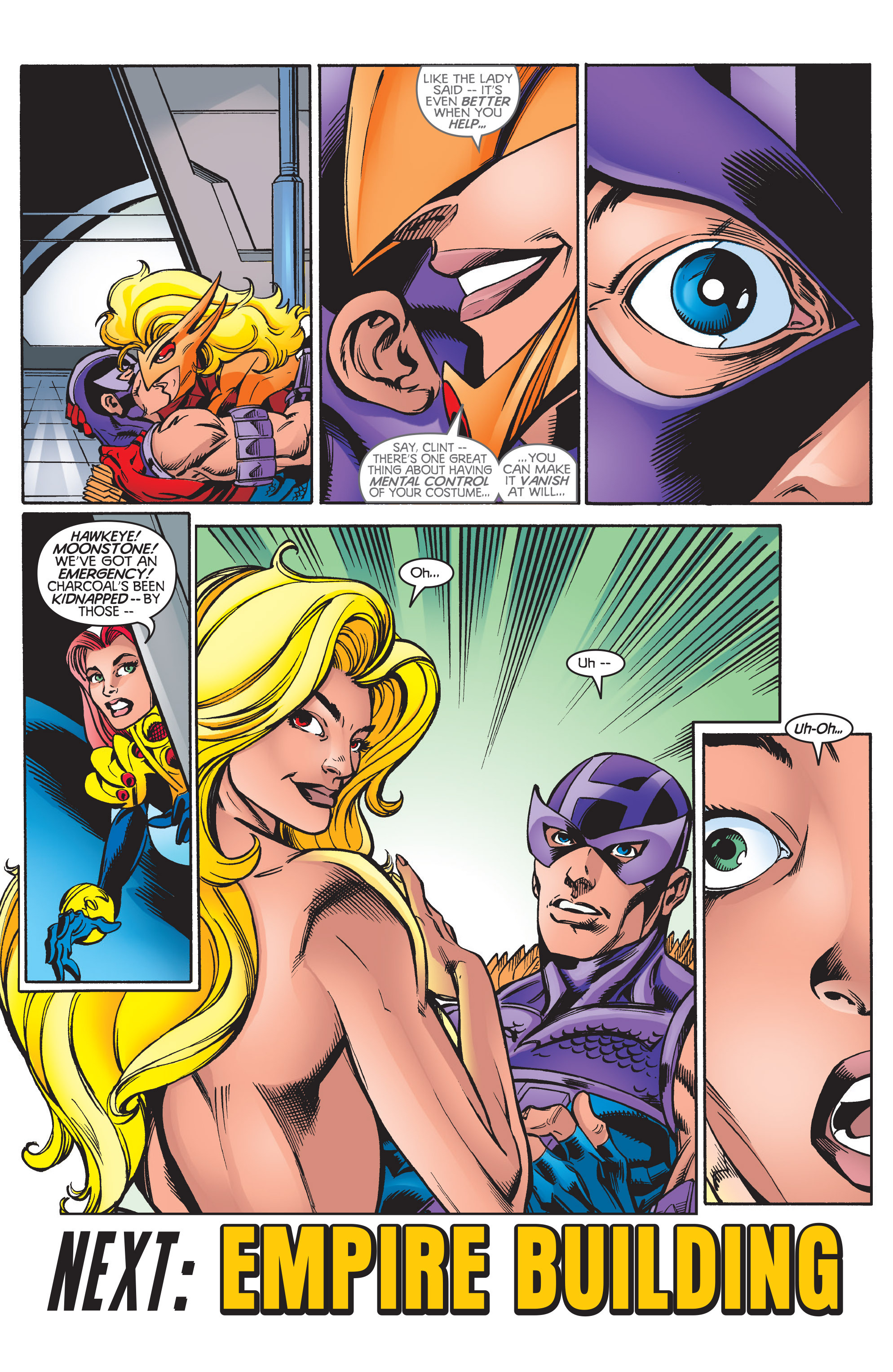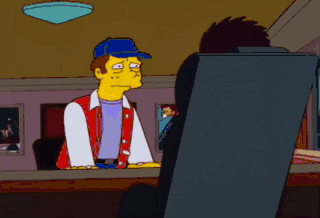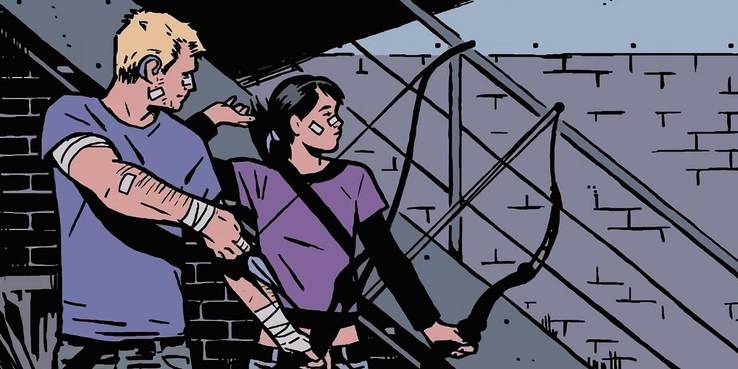In the 1940s, Howard Stark had a vision. Working closely with the United States government on various clandestine projects, he foresaw their true potential. Some only saw in present tense—their ideas were purely contemporary, focusing on the best ways to exploit their discoveries in their battle against the Axis Powers. But Howard looked ahead, and saw the true meaning of this discovery—the world, changing as they knew it. Technology evolving rapidly on a scale which hadn't been seen since the Industrial Revolution. With that change came an opportunity for harmony and evolution—and with harmony and evolution came the balancing forces of discord and desolation. Their discoveries could bring about a golden age of humanity, or allow terror and strife to run rampant and scorch the Earth. They could not hope to possibly understand the gravity of what they had uncovered—but they could still plan for its consequences. A solution had to be put in place now, to safeguard the future from uncertainty. In a world of boundless power, responsibility would be humanity's only hope of survival.
So began Project Vision. Howard's "vision" of a world enriched by technology, not unbalanced by it, would be made real. It began as a mere concept in the mid 40s, though the discovery of extra-terrestrial life encouraged Mr. Stark to speed up his development process. Howard threw himself into his work, devoting every second he could to crafting new ways to implement his vision.
As the years progressed, many concepts were explored: The first few years of the project were a dead-end, focused on an ultimately fruitless attempt to recreate the super-soldier serum. Weaponry was considered, but shelved after R&D failed to reverse engineer the salvaged Kree technology. In later years, A.I. was pursued, but soon after abandoned due to the limitations of technology at the time.
The project was a Sisyphean task, paused and abandoned and restarted time and time again, as responsibilities pulled Howard's attention elsewhere. The project received tentative interest from the SHIELD organisation, who assisted with funding and headhunting for top minds to assist Howard and lighten the burden. It was through this that Howard began to cultivate an inner circle of like-minded individuals, and Project Vision began to truly take shape.
The answer had always been right in front of him, as this circle helped him realise: The mutants that had kick-started his epiphany all those years ago. After decades of their now public existence, it became clear that these mutants had extraordinary powers—powers that could be harnessed for the good of humanity. But the good of "humanity" was exactly what gave Mr. Stark pause: In the recent years, groups like the Brotherhood of Mutants had made it clear that there was a deep gulf between "humans" and "mutants". The ordinary populace was rife with distrust for the mutants, and many felt the same vice-versa. For this to truly be the answer to Project Vision's question, the power had to be divorced from the politics: An impartial being, neither human or mutant, had to be the one to safeguard the world.
Cooperation Howard and the inner circle led to the creation of a miniaturised Arc Reactor, intended to act as the metaphorical "heart" of their creation. Basic prototypes were constructed, creating artificial intelligences that could draw upon the immense power of the Reactor to enable real, human-like thoughts. They could respond to stimuli, imagine, dream, and even converse.
Soon, however, the concept the inner circle had envisioned began to seem unreachable. Their forward-thinking was their Achilles' Heel: Their ideal creation was too advanced, impossible to create with the technology of their time. Disagreements arose about the best course of action, the flames of discourse stoked by an increasingly paranoid Howard Stark. Soon, he began to shut others out of the project, fearful it would collapse when they had come so close. SHIELD's mothballing cut off a significant portion of funding, further limiting their prospects. Many collaborators dropped from the project, now without a source of income to justify their participation.
Then, rather abruptly, Howard's paranoia paid off: He and his wife were assassinated by agents of HYDRA, the crime scene carefully planned so as to resemble a car accident. With most collaborators either having quit or been shut out, Project Vision came to an indefinite end. All files relating to the project were shelved, stuffed away in the archives of Stark Industries. The technology developed was put to use elsewhere, provided it could be reverse-engineered.
Howard's vision proved prophetic. As he had foreseen, the planet needed defenders—the Chitauri Invasion was his worst nightmare, made real. Mercifully, the worst had been avoided, but the war nonetheless took a brutal toll on humanity. For the millions left behind with lasting psychological damage, they chose many different methods of coping with their collective trauma. Some lashed out at the world around them, forming militant groups reminiscent of those from the 80s. Some put their hope in the heroes that had saved them, and looked towards the future. Others, like Marianella Mancha, looked to the past.
Marianella Mancha, an employee at Stark Industries, was the one to uncover the plans for Project Vision. She, like Howard Stark, was resolute in the opinion that the world needed a saviour—and that technology would be that saviour. Rooting through the files to find answers to the questions that the Invasion posed, she happened upon Project Vision—available for all employees, but simply ignored until now.
With the backing of a rekindled partnership with SHIELD, Marianella was successful in pitching the revival of Project Vision to Stark Industries' board of directors and CEO. Now, with the technology that Howard lacked, she could see his vision made manifest.
After nearly thirteen years in development, the project had finally reached its completion. An Arc Reactor served as the heart of the creation, as intended. Though its body was built and not grown, DNA lived in its synthetic organs—Mancha's own, selectively edited to account for the absence of a father. Satisfying all five major characters of life, their creation was a new type of being, neither mutant nor human. They named their creations' species as Synthezoid, and named their creation as Victor. Victor was the last in a long line of attempts, and thus was worthy of the moniker of the Vision.
However ethically dubious one may find it, Victor effectively lives as an employee of Stark Industries. He carries out his work defending humanity, and in return is provided with food and shelter. What exactly he is, and whether he is truly living, is up for debate—and that debate serves as a legal firestorm for the lawyers of Stark Industries to shield themselves from any potential ethics breaches. For better or for worse, the Vision is here to stay.
Necessary NPCs for Victor include
Howard Stark (deceased) and
Marianella Mancha. Other NPCS or player characters can be included in Project Vision's "inner circle" to allow connections if interest is expressed.
Marianella Mancha is Victor's supervisor, as the head of Project Vision. Work is ongoing to improve and develop upon him, though hampered by Ms. Mancha's ethical reservations.
As a Synthezoid, Victor's body functions very differently from that of a human.
Victor is powered by an Arc Reactor. Thus, he does not need food for the purposes of energy.
Victor's organs are made of a synthetic material designed to mimic organic tissue. Thus, by eating, he can immediately provide his body with the necessary materials to repair damage.
Rather than blood, a stream of microscopic nanites flow through Victor's veins. Though not as advanced as the likes of the Bleeding Edge nanites, they can break down food into raw materials to self-replicate and repair. Victor can control these nanites through thought, directing them in the process of repair. These nanites contain Victor's DNA.
Due to Victor's highly irregular anatomy, he is immune to diseases that afflict humans and animals. Theoretically, however, it may be possible to design a special synthetic virus capable of infecting his nanites. Likewise, most third-party healing abilities do not work on him, and he would be unable to gain any benefits from something like the Super-Soldier Serum.
Victor does not need to sleep. However, he can enter a hibernation phase akin to sleep. In this phase, all processes except repair are disabled, allowing it to be carried out at a greatly accelerated rate.
Victor's normal shape greatly resembles that of the standard, red-skinned Vision of Earth-616. However, his complete control over his body allows him to restructure and alter his appearance into the more human-like form he commonly takes. Theoretically, he could take on other forms, potentially even mimicking the appearance of others, however Victor refuses to on moral, as well as practical, grounds. It took tremendous work and concentration to even be able to shift between his human and "Vision" self: To take on another form would certainly be just as difficult. Victor's form can also revert to his original, red-skinned self entirely or in localised areas after sustaining enough damage.
Victor was designed to mimic the powers of mutants, and thus possesses "powers" of his own.
Victor's nanite blood can interface with and control technology. Most notably, they can pass data from a device into Victor's brain.
Via thrusters on his hands and feet, Victor can levitate and fly.
Due to his unique biology, Victor possesses greatly enhanced strength, durability and stamina.
Victor's fingers are capable of firing blasts of energy. Each finger can fire energy individually, or they can coalesce their blasts to form a concentrated beam.
Victor can detach limbs and allow them to function separately, by puppeteering them with his nanite blood.
Victor's brain is incredibly advanced, heightening his reaction times and making him highly intelligent.










